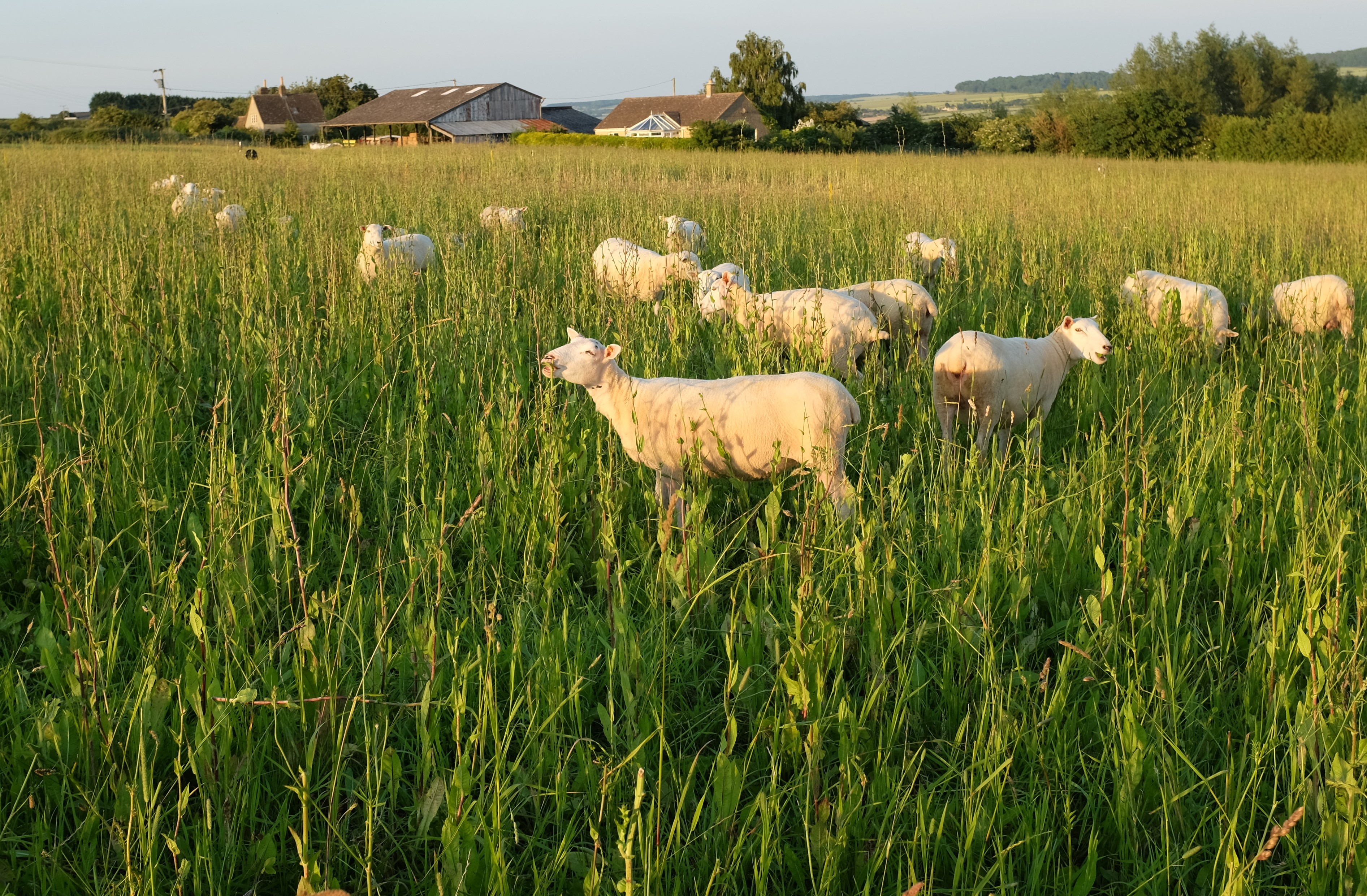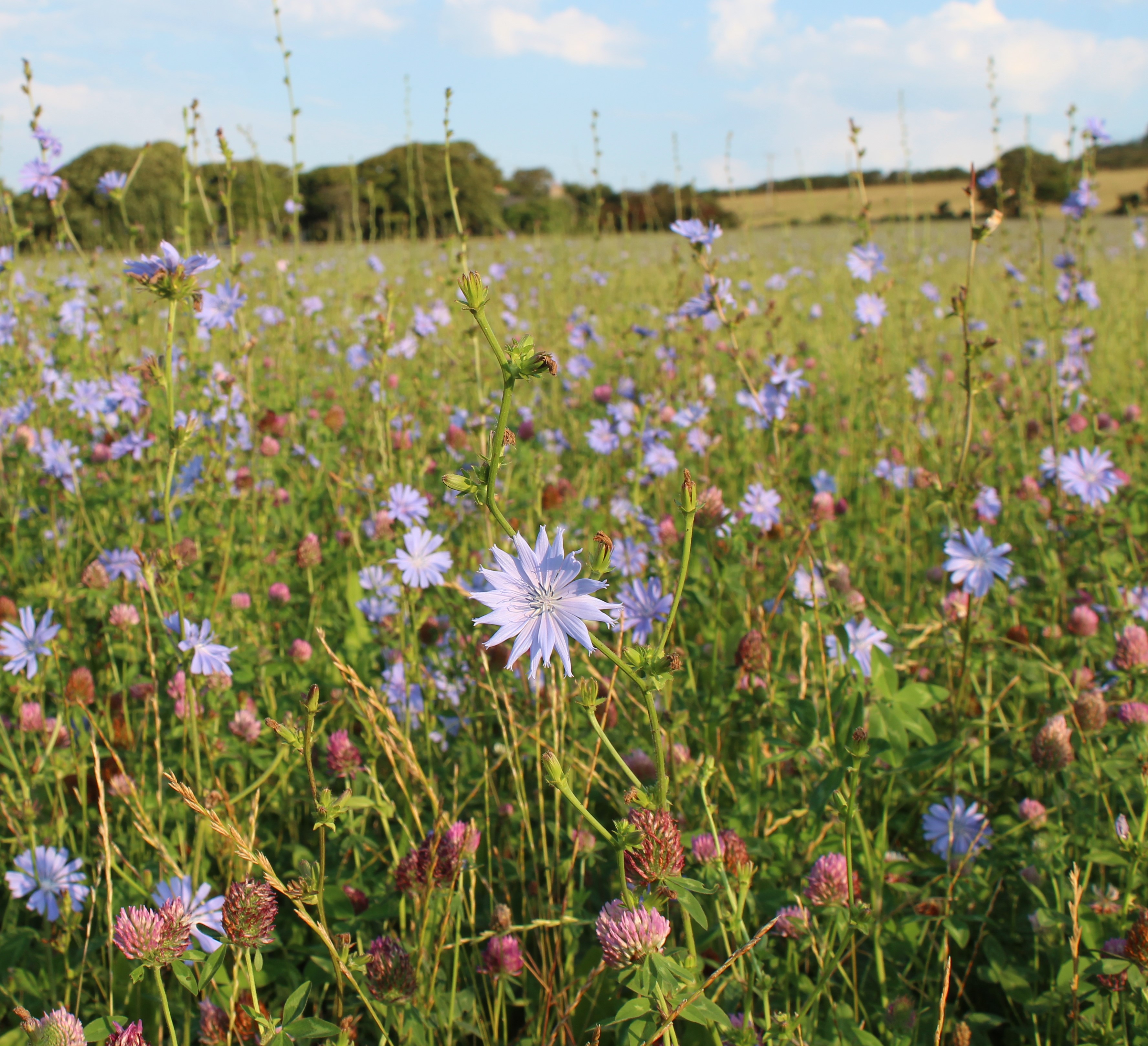Jess Mighall, Technical Advisor at Cotswold Seeds, contributed to a feature in the current issue of the NSA's Sheep Farmer magazine. Read the full article below:
Body condition score (BCS) has one of the largest influences on follicular development and maturation going into the tupping season, and subsequent reproductive success. The optimum BCS pre-tupping is 3.5 (lowland, 2.5 upland). Management of forage production and ewe BCS going into tupping is essential for a successful scanning percentage.
Flushing is a short term fix for those below ideal BCS to provide enhanced nutrition and energy pre-tupping to maximise ovulation and conception rate; Improved nutrition is needed for at least one cycle to influence BCS and fertility.

Herbal leys can increase the rate of reproductive success
Drought tolerance
Between weaning and tupping there is often a period of low nutrition. Ewes that have been better fed during this period are more likely to bear multiples. Herbal leys show increased forage availability through the summer months where simple grass leys may drop off, their inclusion of deeper rooting species provides drought resistance.
Provides mineral elements
Including herbs in forage mixtures is an effective method of mining minerals such as copper, selenium, zinc and iodine, which supports fertility and immune function. For example, deficiency in selenium increases the risk of infertility and embryonic mortality. Plantain and chicory have double the concentration of selenium than ryegrass.
Anthelmintic properties
With warming winters and increasing levels of anthelmintic resistance, helminths are gaining a reproductive advantage through autumn/winter, exacerbating the worm burden in pastures in the spring, coinciding with the periparturient relaxation of immunity around lambing. Including natural anthelmintic forages such as chicory, sainfoin and birdsfoot trefoil, which contain phytochemicals and condensed tannins, reduces worm burden and maximises ewe health for maximal lamb viability and growth.
High protein
Ewes grazing higher protein legume-based forage leys have markedly improved ovulation/conception rates, and reduced abortion rates. Furthermore, birdsfoot trefoil and sainfoin are bioactive forages; they contain condensed tannins which improves protein utilisation by protecting ruminal degradation.
The red clover debate
Research carried out by Innovative Farmers (2022) noted that grazing ewes on herbal leys containing red clover (comprising 10-30% of the sward) can have a positive effect on pregnancy rates, due to improved availability and quality of forage before and during the tupping period. However, red clover is known to contain two main types of phytoestrogenic compounds; Formononetin and Biochanin-A. Research suggests that whilst Biochanin-A stimulates liveweight gain in lambs, Formononetin has detrimental effects on ewe fertility.
There are variations in percentage of these compounds; whilst both compounds are found at their highest concentration in the leaves, Formononetin dominates in the stems. Flower heads have the lowest oestrogenic activity than any other plant part. Formononetin concentration decreases as the plant matures from budding to flowering stage. Research has also noted that drought stress increases the concentration of Formononetin in red clover, increasing the potential of exhibiting oestrogenic effects.
Furthermore, tetraploid varieties have been observed for having higher concentrations of oestrogenic compounds. However, their increased disease resistance, persistence, protein concentration and forage yield in comparison to diploid varieties makes them a popular choice despite this. Furthermore, new varieties are being developed for low concentrations of Formononetin, reducing the risk of oestrogenic effects in high red clover leys (although these varieties are currently limited).
Because of these variations, there are mixed opinions regarding the inclusion of red clover in breeding ewe diets. General guidelines suggest to avoid feeding breeding ewes on leys with red clover for six weeks either side of tupping. Although when included in a diverse herbal ley at a low percentage, the benefits of high protein, drought tolerance, nitrogen fixation and potential improvement to live weight gains and fertility could outweigh any concerns. Further research is needed to effectively conclude the appropriate management of breeding ewes on red clover leys.
Managing herbal leys post tupping
Although fertilisation takes place up to 24 hours after ovulation, implantation does not occur for another 15 days. Prevent losing condition or any abrupt changes in nutrition by having good grazing management and rationing. BCS loss not only increases the risk of embryonic loss and loss of lamb viability and birthweight, but may also affect the future fertility of both ewe and her offspring.
Herbal leys will drop off in production as temperatures drop, as the clovers and herbs overwinter as a crown. That being said, they still require management to avoid becoming too leafy/proud. Lightly graze over the ley in the Autumn, then take stock off by November to allow rest and recovery in preparation for spring.
